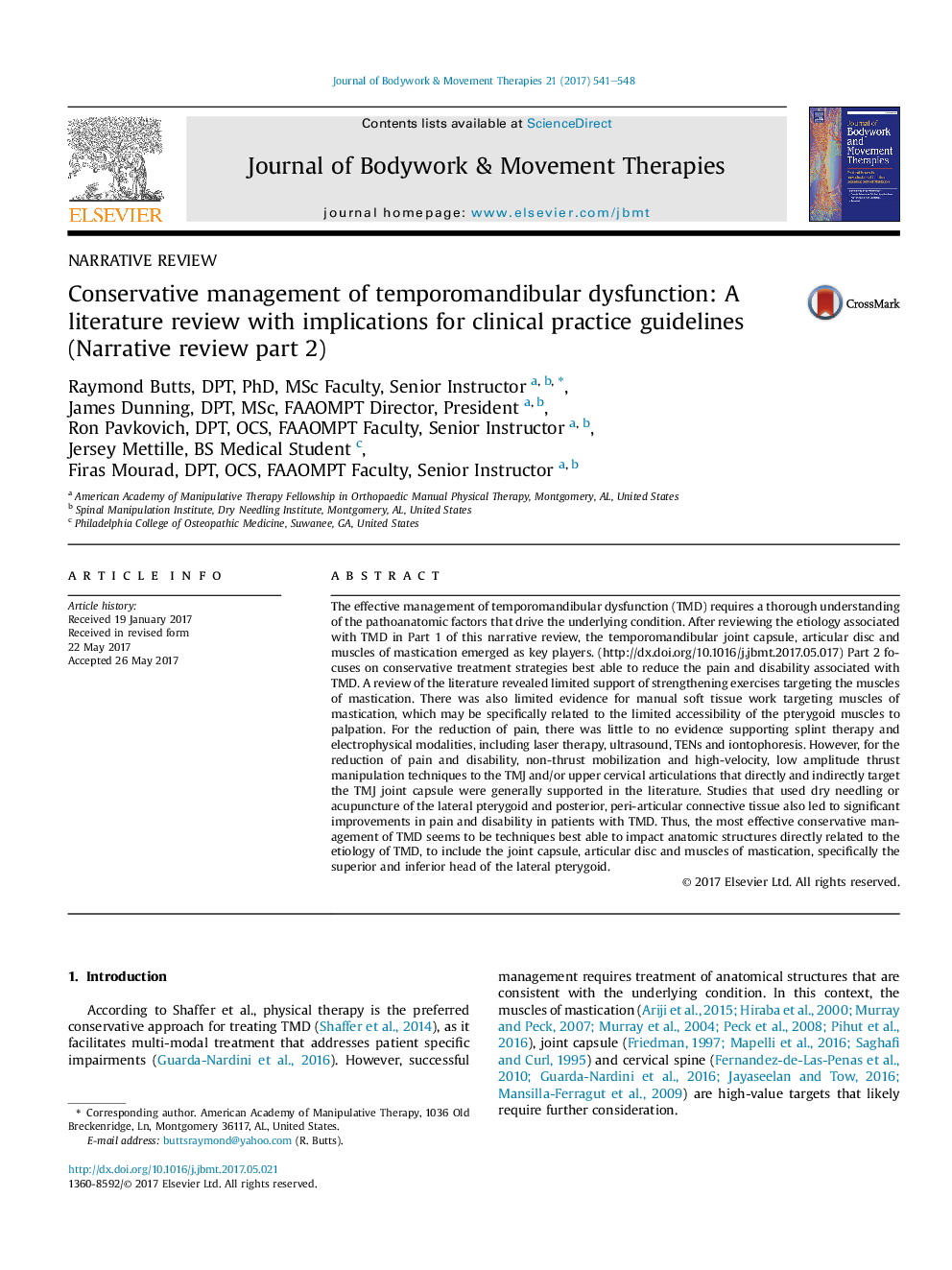| کد مقاله | کد نشریه | سال انتشار | مقاله انگلیسی | نسخه تمام متن |
|---|---|---|---|---|
| 5564012 | 1403495 | 2017 | 8 صفحه PDF | دانلود رایگان |
The effective management of temporomandibular dysfunction (TMD) requires a thorough understanding of the pathoanatomic factors that drive the underlying condition. After reviewing the etiology associated with TMD in Part 1 of this narrative review, the temporomandibular joint capsule, articular disc and muscles of mastication emerged as key players. (http://dx.doi.org/10.â1016/âj.âjbmt.â2017.â05.â017) Part 2 focuses on conservative treatment strategies best able to reduce the pain and disability associated with TMD. A review of the literature revealed limited support of strengthening exercises targeting the muscles of mastication. There was also limited evidence for manual soft tissue work targeting muscles of mastication, which may be specifically related to the limited accessibility of the pterygoid muscles to palpation. For the reduction of pain, there was little to no evidence supporting splint therapy and electrophysical modalities, including laser therapy, ultrasound, TENs and iontophoresis. However, for the reduction of pain and disability, non-thrust mobilization and high-velocity, low amplitude thrust manipulation techniques to the TMJ and/or upper cervical articulations that directly and indirectly target the TMJ joint capsule were generally supported in the literature. Studies that used dry needling or acupuncture of the lateral pterygoid and posterior, peri-articular connective tissue also led to significant improvements in pain and disability in patients with TMD. Thus, the most effective conservative management of TMD seems to be techniques best able to impact anatomic structures directly related to the etiology of TMD, to include the joint capsule, articular disc and muscles of mastication, specifically the superior and inferior head of the lateral pterygoid.
Journal: Journal of Bodywork and Movement Therapies - Volume 21, Issue 3, July 2017, Pages 541-548
